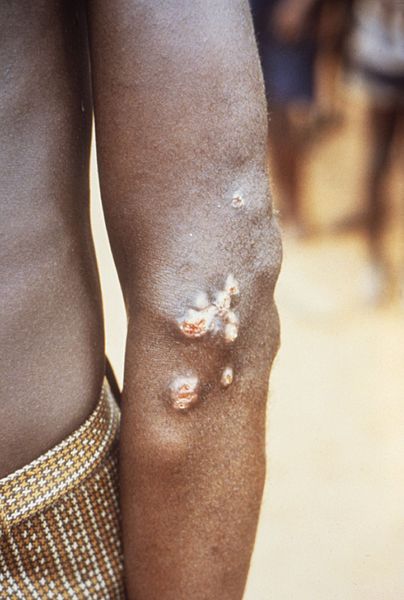This disfiguring tropical disease is caused by the spirochete, Treponema pertenue. This species is morphologically indistinguishable from the agent of venereal syphilis, Treponema pallidum.

Yaws is predominately a disease of children ages 2-15 years living in rural, humid and tropical areas of Africa, South and Central America, the Caribbean, Indonesia and Papua New Guinea.
Living in poor, overcrowded and unsanitary conditions are common characteristics of areas with yaws. The lack of soap and water, clean clothes and footwear and cuts and abrasions enhance the chance of infection.
The infection is transmitted from person to person by direct skin to skin contact with an infected lesion. The spirochetes themselves cannot penetrate intact skin.
The disease is characterized by highly contagious primary and secondary lesions and non-contagious late stage destructive lesions.
The initial lesion or the “mother yaw” appears as a papilloma on the face or extremities. It is painless and may last for months then heal without scarring.
From weeks to years after the appearance of the primary lesion, secondary lesions appear. They usually appear in multiples and form a yellow –brown scab. These can last up to 6 months and will scar if ulcerated.
Untreated yaws can cause destructive lesions of the skin and bone in up to 20 percent of people infected. It is rarely fatal but can be very disabling and disfiguring.
Yaws needs to be differentiated from other skin conditions include scabies, fungal infections, leprosy, leishmaniasis and psoriasis.
Yaws and all the non-venereal treponemes are easily treated with Penicillin.

